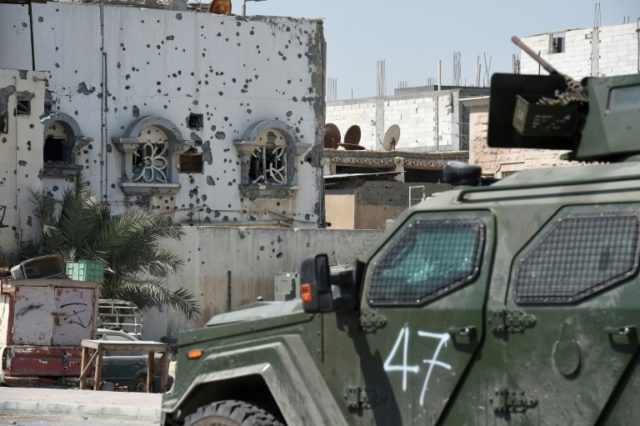The remnants of the Sunni Islamic State (ISIS/ISIL) in Iraq reportedly attacked members a Baghdad-sanctioned, Iranian-backed umbrella organization for mainly Shiite militias located in the central part of the nation in Salahaddin province.
Known as the Popular Mobilization Units/Forces (PMU/PMF) or Hashd al-Shaabi, the Baghdad-sponsored militia have been combating ISIS, alongside the U.S.-led coalitions and their allies at times, despite also threatening American forces.
“On a main road between to locations within Salahaddin, revealed a police officer, a group of IS [Islamic State] militants attacked Hashd al-Shaabi militias. The officer further stated that due to the ambush, a fighter from the Hashd al-Shaabi was killed and fire exchange was ongoing for some time,” reported the Kurdish outlet Bas News on Friday.
In February 2017, the PMU launched a new effort to recapture more Iraqi villages from the ISIS terrorist group. Some analysts believe that the PMU efforts to seize territory in Iraq, particularly along the Syrian border, are part a ploy for Iran to seize control of supply routes through Syria—between Iran and Lebanon—that had been controlled by the Sunni terrorist group.
Essentially, the fall of ISIS could present Iran with the ability to finally establish its long-time desired “Shiite crescent” sphere of influence—a single land route that binds together territory held by several Islamic Republic allies, including Hezbollah in Lebanon, the Assad dictatorship in Syria, and the Iranian-controlled government of Iraq.
More recently, the PMU, on behalf of Baghdad and Tehran, have been fighting the Iraqi Kurds who refuse to abandon their effort to break away from Baghdad and become an independent state.
The United States has joined Turkey, Iran, and Syria in opposing an independent Kurdish state, claiming it would distract from the fight against ISIS.
ISIS’s “sudden ambush” against PMU comes on the heels of Iraq’s Shiite Prime Minister Haider al-Abadi’s speech at the World Economic Forum in Switzerland in which he “blasted Syria and the U.S.-led coalition for leaving behind pockets of ISIS operating across the region,” notes Bas News.
In November 2017, the Iraqi parliament legalized the PMU as a component of the Iraqi military and under the leadership of Abadi.
Now that ISIS is close to defeat, the PMU is not willing to allow their growing influence to wane.
The U.S. military has praised the Shiite fighters for their contribution to the ongoing fight against ISIS.
Although the so-called caliphate in Iraq and Syria is on the brink of collapsing at the hands of the U.S.-led coalition, the terrorist organization remains a threat.
ISIS reportedly maintains a “lethal force” described that experts say is comprised of at least between 1,000 and 3,000 active terrorists and about 7,000 loyalists.
That means ISIS’s strength in Iraq and Syria stands at up to 10,000, including active fighters and loyalists, despite international operations to annihilate the group.
The number of ISIS active fighters and loyalists varies, but there appears to be a consensus that the total is 10,000.
NBC News learned from Hisham al-Hashimi, an adviser to Baghdad in its fight against ISIS, that “while the number of active fighters on the battlefield is probably in the range of 1,000 to 1,500, the actual number of ISIS-loyalists in Iraq and Syria is closer to 10,000,” including loyalists.
At its peak, the Islamic State had about 45,000 active jihadists in and around its caliphate in Iraq and Syria, which means the group’s strength has plunged by about 98 percent to about 1,500.
That rate mirrors the 98 percent collapse of the so-called caliphate’s territorial size, which stood at about 35,000 square miles at its pinnacle.

COMMENTS
Please let us know if you're having issues with commenting.